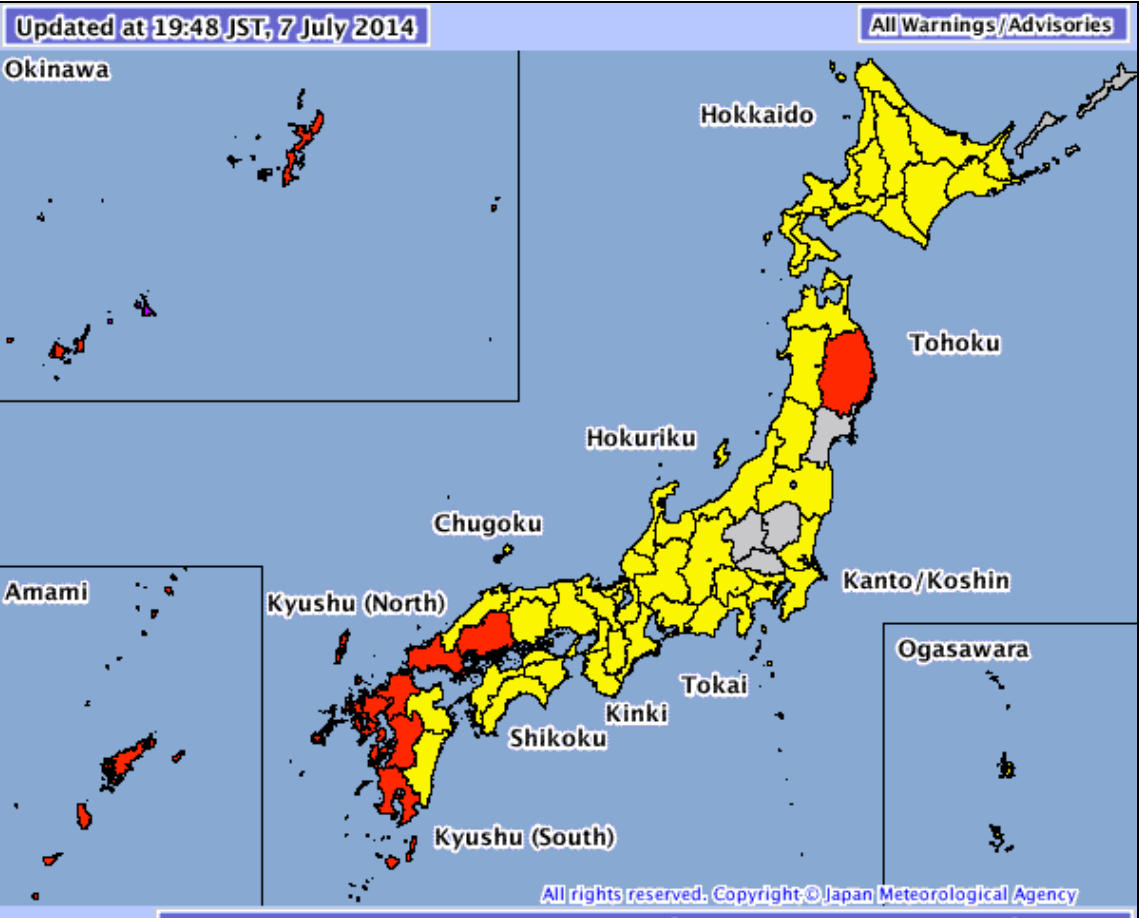Okashi
English: Japanese traditional sweets are somewhat unusual. Many of them are some variant of mochi, a ball made from pound rice or rice flower.
English: Japanese traditional sweets are somewhat unusual. Many of them are some variant of mochi, a ball made from pound rice or rice flower.
English: The greatest invention since sliced bread is the onigiri, a rice ball which is wrapped in nori. Each of them contains a small portion of fish, chicken, sour plumb or konbu.
にほんごで: おにぎりおいしかった。ごはんのなかは さけ、チキン、うめぼし、こんぶ があります。
Nederlands: Een van de beste vindingen hier is de onigiri, een balletje rijst gewikkeld in nori, gevuld met vis, kip, zure pruim, konbu, … .
にほんごで: ともだちはいっしょににしもないぼんおどりをみるにゆきました。たのしかった。
English: Someone was kind enough to take me to the Nishimonai Bon Odori.
English: Sometimes some surprisingly horrible things may happen in children’s stories - I just read about a poor sparrow whose tongue was cut by an old woman for eating her nori. Strange enough the sparrow can still talk after this.
にほんごで: したきりのはなしをよんでいる。ばあさはすずめのしたをきった。むごいね。でもするとすずめははなすことができます。どうそうする?
English: With the summer the cicadas have also arrived. Their song when arriving and leaving the university is strangely comforting.
Automated translation websites have a high amusement value, but are of little help with reading Japanese text.
In many places one can see little statues adorned with bibs. These Jizou statues are protectors of travellers and children. One of the books in the picture in the previous post has them on the cover; A poor hat-maker, after an unlucky day not being able to sell his hats, gives the hats to the jizou to protect them from the snow. Later they leave rice, miso and fish at his door so he can properly celebrate the new year.
にほんごで: いまセミある。おとはよい。
にほんのはなしはグーグルtranslateでたのし、でもつかいことができない。
にほんはじぞうがたくさんある。かさじぞうのはなしはおもしろい。じいさんはじぞうにかさをくれた、ゆきがふっていたから。そうしてじいさんはじぞうにごはんとみそとしょうがつさかなをもらいました。じいとばあはうれしかった。
じぞうたいせつですね。そうならいました。

English: Yellow = Advisories, Red = Warnings, Typhoon season has started! Small detail: Sendai is in one of the grey areas.
:にほんごで: たいふう!
にほんごで: にほんのコンビにが4まんあります。コンビにがべんり。たべものとのみものある、そしてコンビにでコピすることとデリベリすることができます。よむひとがたくさんいます。インターネットでかうたかいものをげんきんではいりにいきます。
いまももとみかんとチェリー ある。いただきます!
ももたろうよんだ。はなしはちょっとたいへんだった、でもたのし。
English: One of the many things making life in Japan easier are the more than 40000 convenience stores. Not only do these shops sell food (onigiri, bento, salad, fruit, drinks) they also provide, among other things, copying service, photo printing, mail delivery and payment services. One can, for example, pay an intercontinental flight ticket at the counter using cash at midnight. Many of the locals also use the shops to pass some idle minutes reading the magazines.
A few weeks ago was the time to enjoy the cherry blossom season. Now is the time to enjoy the resulting cherries.
English: There is a manga museum in Kyoto!
At the final stop in Tokyo the shinkansen (bullet trains) wait for twelve minutes before departing again, three minutes for the passengers to get out, seven minutes for cleaning, two minutes for the new passengers to board. Often the teams of 22 cleaners per train have to wait for the disembarking passengers, leaving them less than five minutes to deliver a cleaned train.
にほんごで: きょうとにまんがミュージアムがあります!
しんかんせんはとうきょうへ12分まちます。しんかんせんが7分まできれいになる!
Nederlands: Er is een manga museum in Kyoto!
Bij het eindpunt, in Tokyo, blijven de shinkansen twaalf minuten wachten. Drie minuten om uit te stappen, zeven voor de schoonmaak en twee om in te stappen. Vaak zorgen de trage uitstappers ervoor dat de teams van 22 schoonmakers per trein deze in minder dan vijf minuten schoon achterlaten.